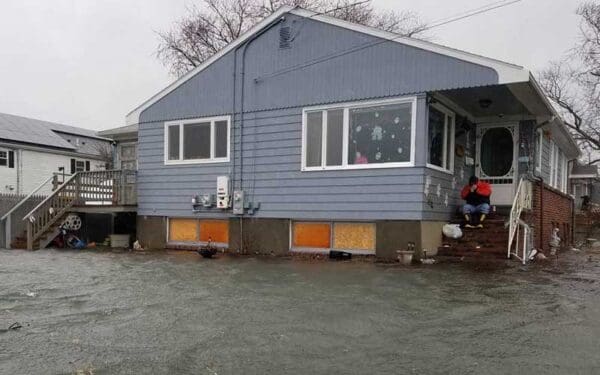
Time spent around bodies of water, small or large, can measurably improve your health. Photo: EcoPhotography
When was the last time you stood before the ocean and felt your shoulders relax, your muscles release, your breaths deepen, and your thoughts quiet? That moment when the vast blue horizon seems to absorb your worries is not just a feeling. It’s biological, it’s physiological, and it’s incredibly healing.
The Science of the Sea
In an age of constant noise, rising anxiety, and screen-bound connections, people are starting to turn back to the ocean, not just for beauty, but for healing. Science confirms what we feel is fact. A 2020 study found that being “near, in, on, or under water” for any amount of time lowers stress and anxiety, boosts our well-being and happiness, and lowers heart and breathing rates. The study, which analyzed 35 peer reviewed articles, also found that exposure to these natural environments is associated with lower levels of psychological distress and improved wellbeing.
In fact, several studies have found that people who simply view videos of blue space or marine life, like aquarium live feeds, experience exceptional reductions in anxiety and overall heart rate. Exposure to a body of water, indirectly or directly, can positively influence mental and emotional health.
Blue Space = Blue Mind
Blue space refers to visible bodies of water such as oceans, rivers, lakes, and their associated environments. Blue spaces provide something we all could use right now: Relief, restoration, and reconnection. Just as “green space” has been shown to improve mental health, blue space is emerging as a powerful mental health tool. Blue spaces are more than just recreation. They’re essential to human wellbeing and connection.
The resulting effect is called “blue mind,” a term coined by marine biologist Wallace J. Nichols in 2015. Blue mind refers to the positive mental state that is achieved when being near, in, or on water. In a world that often demands constant output and perfection, blue spaces offer a much-needed stillness.
How do “blue spaces” work? There are three main principles:
- Attention restoration: Blue space can help our minds recover from the overstimulation of modern life. Watching waves or rippling water gives our brain what researchers call “soft fascination,” allowing us to reset without effort.
- Stress recovery: Blue space is known to activate the parasympathetic nervous system. That means that our heart rates slow and our cortisol levels drop when we are around bodies of water.
- Sound Therapy: Studies have shown listening to the sound of water, particularly ocean sounds, creates neurochemicals like dopamine and oxytocin, which reduce stress and promote feelings of relaxation and pleasure. Next time you find yourself in the market for ambient white noise, consider ocean sounds.
Blue Sanctuaries
Walk any stretch of New England’s vast coastline and you’ll see it. People are drawn to the ocean, not just for work or transit, but for something calmer. They come to watch the waves, to feel the cool ocean water on their skin, to breathe the salt air, to play in the sand, and to let the tide pull their thoughts out to sea. Along our coasts, the ocean isn’t just scenery, it is sanctuary.
To reaffirm our shared right to connect, heal, and learn from the ocean, we must protect it. Whether we’re cleaning garbage from our shores, safeguarding endangered species like the majestic North Atlantic right whale, or fighting for marine protected areas, we need to be champions for these magical spaces.
Returning to the Shore
Access to blue space is not limited to sandy beaches, dramatic coastlines, or endless horizons. Research has shown that lakes, rivers, canals, wetlands, and even urban fountains can offer many of the same mental health benefits. These environments provide the same essential ingredients for restoration: visual openness, natural movement of water, calming sounds, and reflective surfaces.
It is important to recognize that blue space encompasses more than just coastal areas. Waterfront property may be a privilege reserved for few people but being able to spend time around water in some form can and should be accessible to everyone, whether you can stroll a beach or just relax by a park fountain. Access to diverse types of blue spaces ensures that everyone can experience the mental health advantages of being near water, no matter where they live.
Mental health maintenance and recovery isn’t a straight path; it can resemble the tide. Blue space has offered me a place to float when I am too tired to swim. Water just is … moving, changing, and existing, and in its presence, I’ve learned that I too can just exist, without judgement, stress, or pressure. For anyone struggling with the weight of depression or anxiety this summer, I urge you to seek out water in any capacity. Spend time near it, listen to it, watch it, and let it hold some of the weight for a while.



